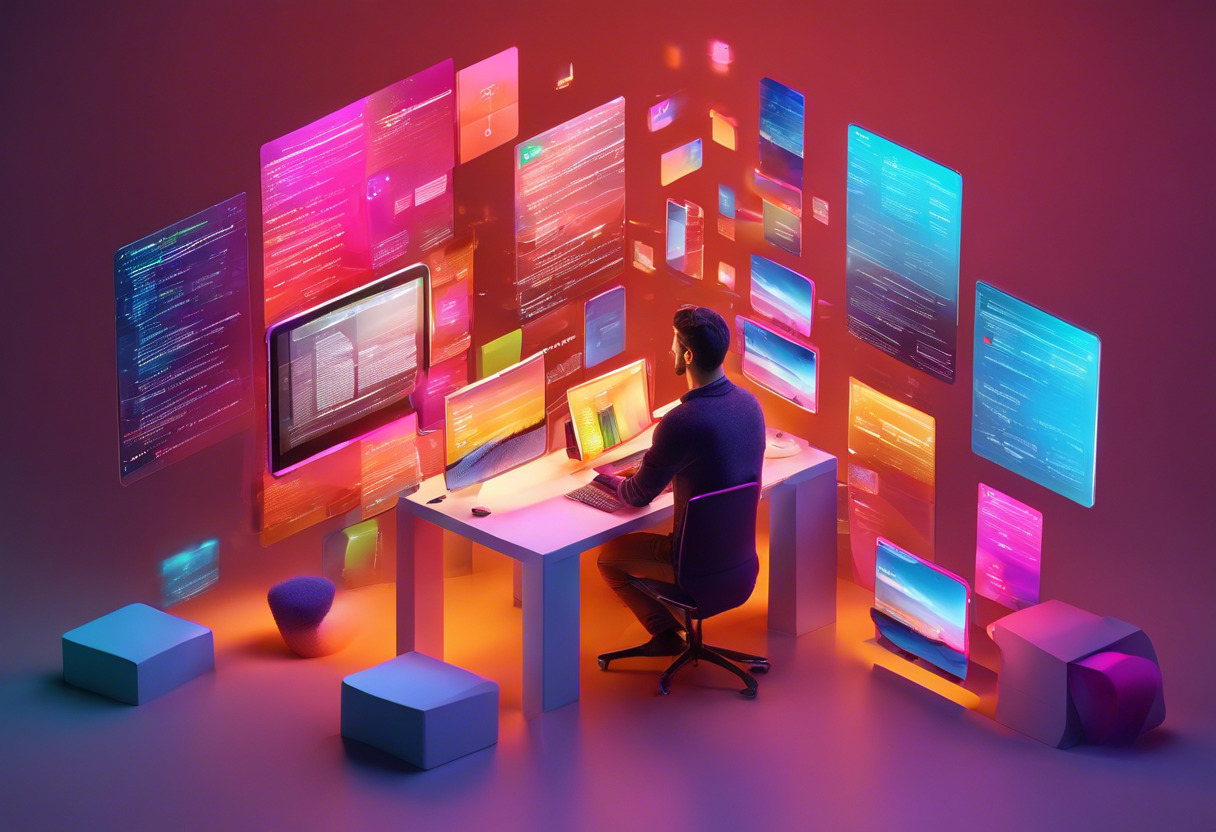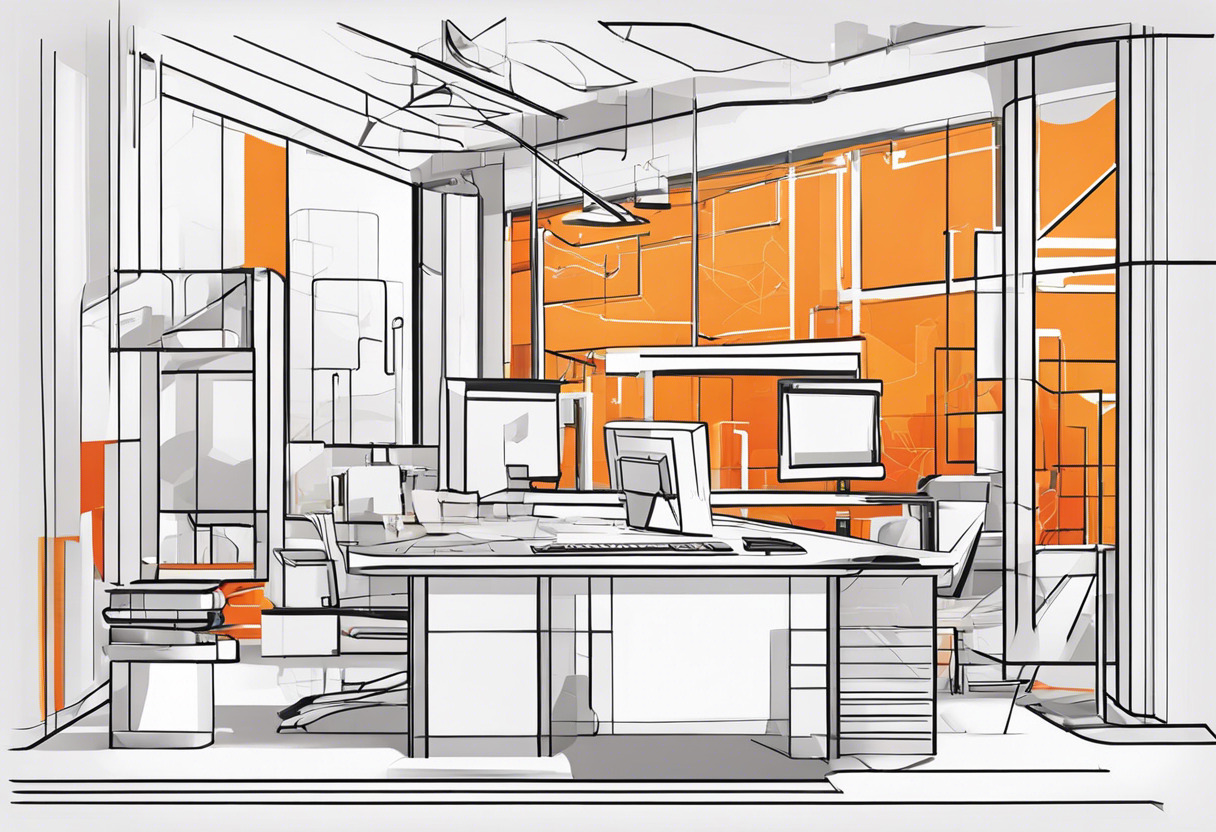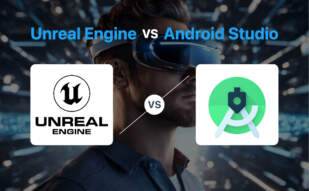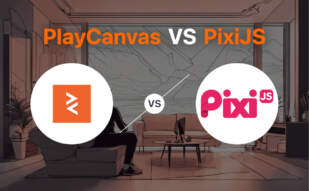For dedicated mobile app creators, Solar2D offers quick, cost-effective build times with a single Lua code base across platforms prominently featuring mobile and TV devices. Flutter, developed by Google, excels in UI software development, offering consistency and supported by the extensive power of the Dart software kit for those prioritizing responsive, cross-platform presence, including web apps.

Key Differences Between Solar2D and Flutter
- Solar2D focuses on mobile, TV devices, and desktop application production featuring a single Lua code base, while Flutter supports multiple platforms with a focus on UI software development using C, C++, and Dart.
- Solar2D offers live build updates over a local network, whereas Flutter maintains consistent 120 frames per second rendering.
- Solar2D provides an extensive array of plugins and robust API capacity. Flutter offers a large widget catalog with both stateful and stateless capabilities.
- Flutter has official support, converged with Google’s advertising ecosystem and broader community. Meanwhile, Solar2D boasts privacy awareness with no tracking and no data gathering, aligned with retaining rights to your source code.
| Comparison | Solar2D | Flutter |
|---|---|---|
| Initial Release | December 2009 | May 2017 |
| Stable Release | March 30, 2023 | August 2023 (version 3.13.0) |
| Language(s) Used | Lua, C++, Obj-C, C, Java | C, C++, Dart |
| Platform Compatibility | iOS, Android, Kindle, Windows, Linux, macOS, Apple TV, Fire TV, Android TV | Android, iOS, Google Fuchsia, Web platform, Linux, macOS, Windows |
| Community Support | Extensive, with more than 10 years of active development | Supported by Google, with active developer community |
| Key Features | Single code base, vibrant developer community, faster frame rates, Lua-based | Consistent 120fps rendering, large widget catalog, stateful/stateless widgets, cross-platform capability |
| Third Party Plugin Support | Yes, via Solar2D Marketplace and Plugins | Yes, with a thriving ecosystem of third-party packages |
| Licensing | 100% Free, MIT License | Open-source |
| IDE Support | Solar2D Simulator for direct app building and Solar2D Native for integrating Lua code within Xcode or Android Studio | IntelliJ IDEA, Android Studio, Visual Studio Code, Emacs |
What Is Solar2D and Who’s It For?
Solar2D is an open-source, cross-platform mobile app development technology. Beginning its journey as Corona SDK, the platform has over a decade of strong development legacy. With Solar2D, you can develop apps for the gamut of platforms – mobile, desktop, and smart TVs, truly an any-device solution. It uses Lua, a leading scripting language in the gaming industry, and offers frameworks like Solar2D Native for calling native libraries/APIs. It’s remarkably suitable for beginners and yet sizably potent for experienced developers.

Pros of Solar2D
- Single code base boosts cost and time efficiency
- Intuitive design development with extensive designing options
- Vibrant, supportive developer community
- Quicker monetization with integrated ad support
- Powerful APIs with faster frame rate than competitors
Cons of Solar2D
- Limited to 2D mobile applications
- Requires knowledge of Lua programming language
- Debugging can be challenging for complex applications
What Is Flutter and Who’s It For?
Developed by Google, Flutter is an open-source UI software development kit. Promising consistent rendering at 120 frames per second, this toolkit is built with C, C++, and Dart languages. Its universality is striking – Android, iOS, Google’s own Fuchsia, Web, Linux, macOS, and Windows, it’s got you covered. Flutter apps are written in Dart language and can enjoy an efficient memory footprint due to AOT compilation. Sport a large widget catalog, they also support gestures and animations. Not just developers but even designers and Flutter enthusiasts adore it.

Pros of Flutter
- Powerful rendering engine written in C++
- Extensive widget catalog and solid multi-platform support
- Profound support for animations and gestures
- Speedy app development with third-party package ecosystem
- Official support for top IDEs
Cons of Flutter
- Requires knowledge of Dart programming language
- Limited community support compared to older frameworks
- May underperform for complex graphics and animations
Solar2D vs Flutter: Pricing
Both Solar2D and Flutter offer their technology completely free of charge, with extensive features and platforms supported included at no cost.
Solar2D
Solar2D is an open-source, MIT licensed technology platform. No costs are associated with using the platform, as it is 100% free. There are no hidden fees or royalties, and developers retain all rights to their source code. Solar2D also emphasizes privacy, with no tracking or data gathering.
Flutter
Flutter, developed by Google, is an open-source UI software development kit. Similar to Solar2D, Flutter is free to use. There are no charges associated with using its technology. Flutter’s extensive array of features, robust support for multiple platforms, and powerful SDK are included without any cost.
Code Examples for Solar2D & Flutter
Solar2D
Below code snippet gives a small taste of a physics application in Solar2D. It showcases creation and interaction of dynamic objects within a pre-defined physics world. Ensure you have started physics module before integrating this code.
local physics = require("physics")
physics.start()
local bodyA = display.newRect( 50, 300, 50, 50 )
physics.addBody( bodyA, "dynamic" )
local bodyB = display.newRect( 200, 300, 50, 50 )
physics.addBody( bodyB, "dynamic" )
local myJoint = physics.newJoint( "pivot", bodyA, bodyB, bodyA.x, bodyA.y )Flutter
Presenting a widget code snippet with navigation for Flutter. Remember, you need to configure the routes in main() function of your app for proper functioning.
import 'package:flutter/material.dart';
class FirstScreen extends StatelessWidget {
@override
Widget build(BuildContext context) {
return Scaffold(
appBar: AppBar(
title: Text('First Screen'),
),
body: Center(
child: ElevatedButton(
child: Text('Navigate to second screen'),
onPressed: () {
Navigator.pushNamed(context, '/second');
},
),
),
);
}
}
class SecondScreen extends StatelessWidget {
@override
Widget build(BuildContext context) {
return Scaffold(
appBar: AppBar(
title: Text("Second Screen"),
),
body: Center(
child: ElevatedButton(
child: Text('Go back to first screen!'),
onPressed: () {
Navigator.pop(context);
},
),
),
);
}
}Decision Time. Solar2D or Flutter?
With both platforms offering blazing performance and extensive capabilities, choosing between Solar2D and Flutter can be tough. But don’t sweat it, let’s break it down for different audience segments.
The Newbie Developer
If you’re just beginning your tech journey, consider Solar2D. The support of Lua, a leading game scripting language, makes it a comfortable choice for beginners. With a wealth of resources and a friendly developer community, Solar2D holds your hand while you take your first dev steps.

The Cross-platform Conqueror
On the hunt for the ultimate cross-platform solution? Flutter wins this round. Developed by Google, this powerhouse offers consistent rendering and development across Android, iOS, Google Fuchsia, Web platform, Linux, macOS, and Windows. Seamless UI on multiple platforms? Flutter’s got you covered.

The Game-Changer
For those breaking into the gaming industry, our tip is Solar2D. This game development engine shines with Lua, a language featured in Warcraft, Angry Birds, Civilization and much more, ensuring sharp game performance. Your pathway to a chart-topping game begins with Solar2D.

The Efficiency Enthusiast
Value efficiency? Opt for Flutter. With its “write once, use everywhere” philosophy and a considerably improved performance on iOS devices, Flutter ensures your development strides aren’t hampered. Stick with Flutter to sail through those tight deadlines.

Navigating the Solar2D and Flutter realms might be daunting, but here’s the distilled verdict: If you’re breaking into game development, lean towards Solar2D. For a robust cross-platform solution, embrace Flutter.
Patrick Daugherty
Content writer @ Aircada. Merging AR expertise with a love for late-night gaming sessions.





